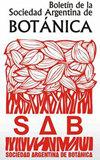阿根廷科尔多瓦特拉斯拉西尔拉山谷(圣哈维尔省)土著从业人员的民族医学经验和药用植物使用的融合。
IF 0.7
4区 生物学
Q4 PLANT SCIENCES
Boletin De La Sociedad Argentina De Botanica
Pub Date : 2017-12-15
DOI:10.31055/1851.2372.V52.N4.18873
引用次数: 2
摘要
:阿根廷科尔多瓦transasierra山谷(圣哈维尔省)土著从业者的民族医学经验和药用植物使用的融合。这个山谷被命名为Valle de Traslasierra,它延伸到sierra de Los Comechingones山的西部山腰上。由于大规模的人口流动,其与大城市的特征距离发生了质的变化。本研究旨在对该地区的民族药和天然药典进行特征分析。我们采用了具有代表性的民族植物学方法的定性和定量方法。我们证明了一个巨大的和不同的治疗发挥了本土从业者与总共676药用用途对应的231分类群和84植物学家族。通过描述性统计对其使用频率和分类群进行了分析。被引分类群数量和药用价值较高的科为菊科、兰科、豆科、蔷薇科和马鞭草科。最常见的应用是与胃肠道疾病相关的,其次是与肺炎和心脏病相关的。在应用数量最多的分类群中,60%为引进物种,40%为野生本地物种。最后,这些叙述表明,当地从业者在保留基于流行医学知识的实践的同时,还将各种治疗实践和表现形式,特别是替代医学的实践和表现形式结合起来,从而形成了一个具有多种含义的庞大的天然药典,具有典型的多元文化背景。本文章由计算机程序翻译,如有差异,请以英文原文为准。
Confluencia de experiencias etnomédicas y uso de plantas medicinales en practicantes nativos del Valle de Traslasierra (Departamento San Javier), Córdoba, Argentina.
: Confluence of ethnomedical experiences and use of medicinal plants of practitioners native to Translasierra Valley (San Javier Department), Cordoba, Argentina. The valley named as Valle de Traslasierra extends over the western mountainside of the Sierras de Los Comechingones hills. Its characteristic distance from large cities changed qualitatively due to major migration flows. This study aims at characterizing the ethnomedicine and natural pharmacopoeia in the region. We followed qualitative and quantitative methods representative of the ethnobotanical approach. We evidenced a vast and varied therapeutics exerted by native practitioners with a total of 676 medicinal uses corresponding to 231 taxa and 84 botanical families. An analysis of frequency of uses and taxa was also carried out through descriptive statistics. The families with higher number of cited taxa and medicinal use are Asteraceae, Lamiaceae, Fabaceae, Rosaceae and Verbenaceae. The most commonly found applications were those related to gastrointestinal disorders, followed by those related to pneumology and cardiology. From the taxa with the largest number of applications, 60% comprise introduced species and 40% consist of wild native species. Finally, the narratives show that native practitioners, while keeping alive practices based on popular medical knowledge, they have incorporated various therapeutic practices and representations, especially from alternative medicine, thus forming a vast natural pharmacopoeia with multiple meanings, typical of multicultural contexts.
求助全文
通过发布文献求助,成功后即可免费获取论文全文。
去求助
来源期刊

Boletin De La Sociedad Argentina De Botanica
PLANT SCIENCES-
CiteScore
1.00
自引率
33.30%
发文量
46
审稿时长
>12 weeks
期刊介绍:
Bol. Soc. Argent. Bot. publishes original scientific works from the whole spectrum of Plant Biology (structure, anatomy, development, physiology, cytology, genetics, evolution, ecology, paleobotany, palynology, ethnobotany, etc.) in the diverse vegetable organisms and related groups (mycology, ficology, lichenology, briology, etc.), both in basic and applied aspects.
Taxonomic works (of systematics, phylogeny, monographs, revisions, lectotypifications, nomenclatural acts, descriptions of taxa), phytogeographic and phytosociological works (survey and classification of vegetation at different spatial scales and without restriction of methodological approaches) are considered for publication. Contributions that address complete phytogeographic units or sub-units and those that fill gaps in knowledge of vegetation in little-known territories are especially welcome. Extensions of geographical areas are published only when it comes to new citations for a country. Checklists and lists of annotated plants are not published.
Articles submitted for publication must be original and must not have been submitted to another publisher or previously published (print or electronic format). Submissions of papers already published in another language will not be accepted (autoplagio for translation).
 求助内容:
求助内容: 应助结果提醒方式:
应助结果提醒方式:


